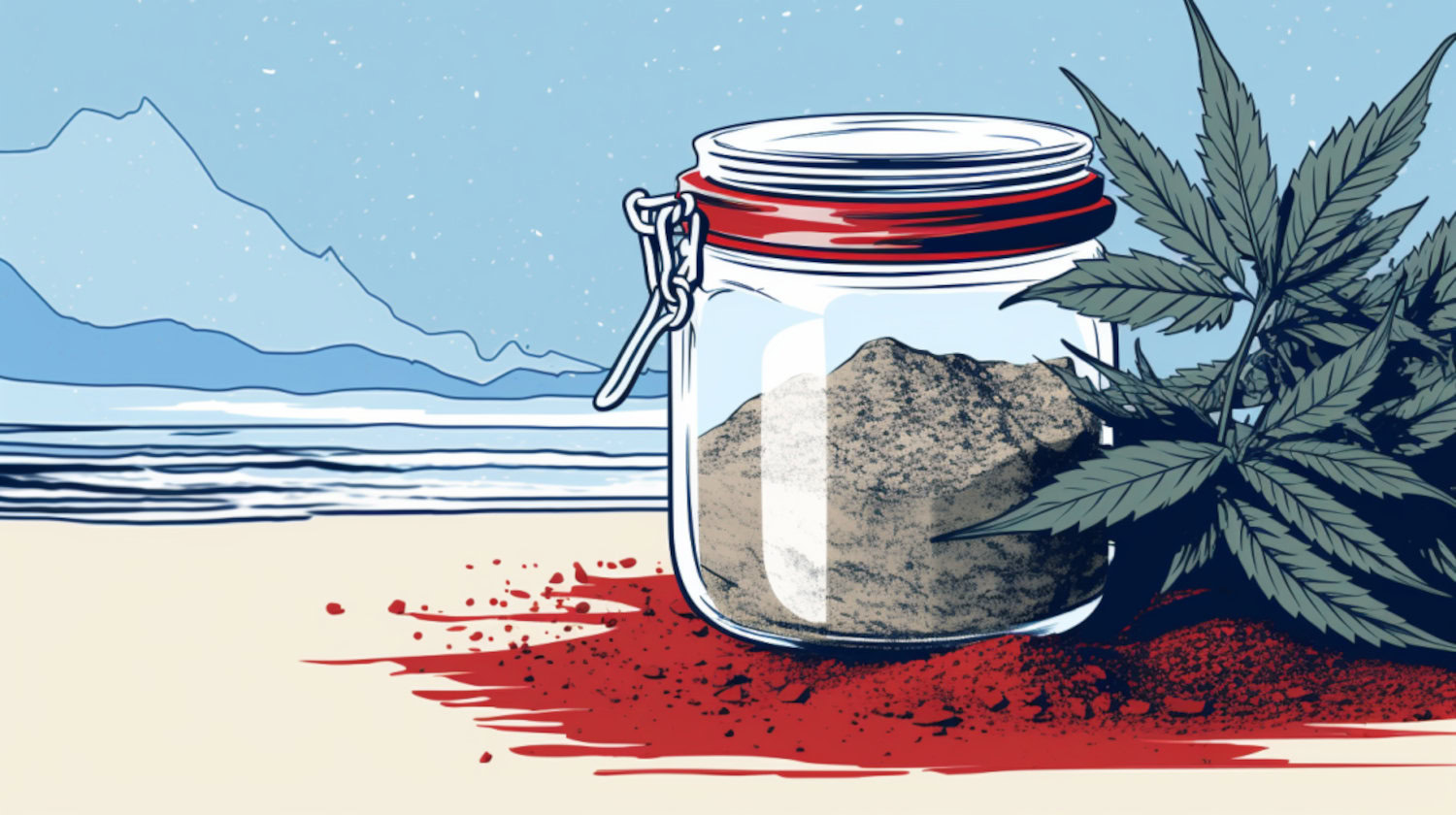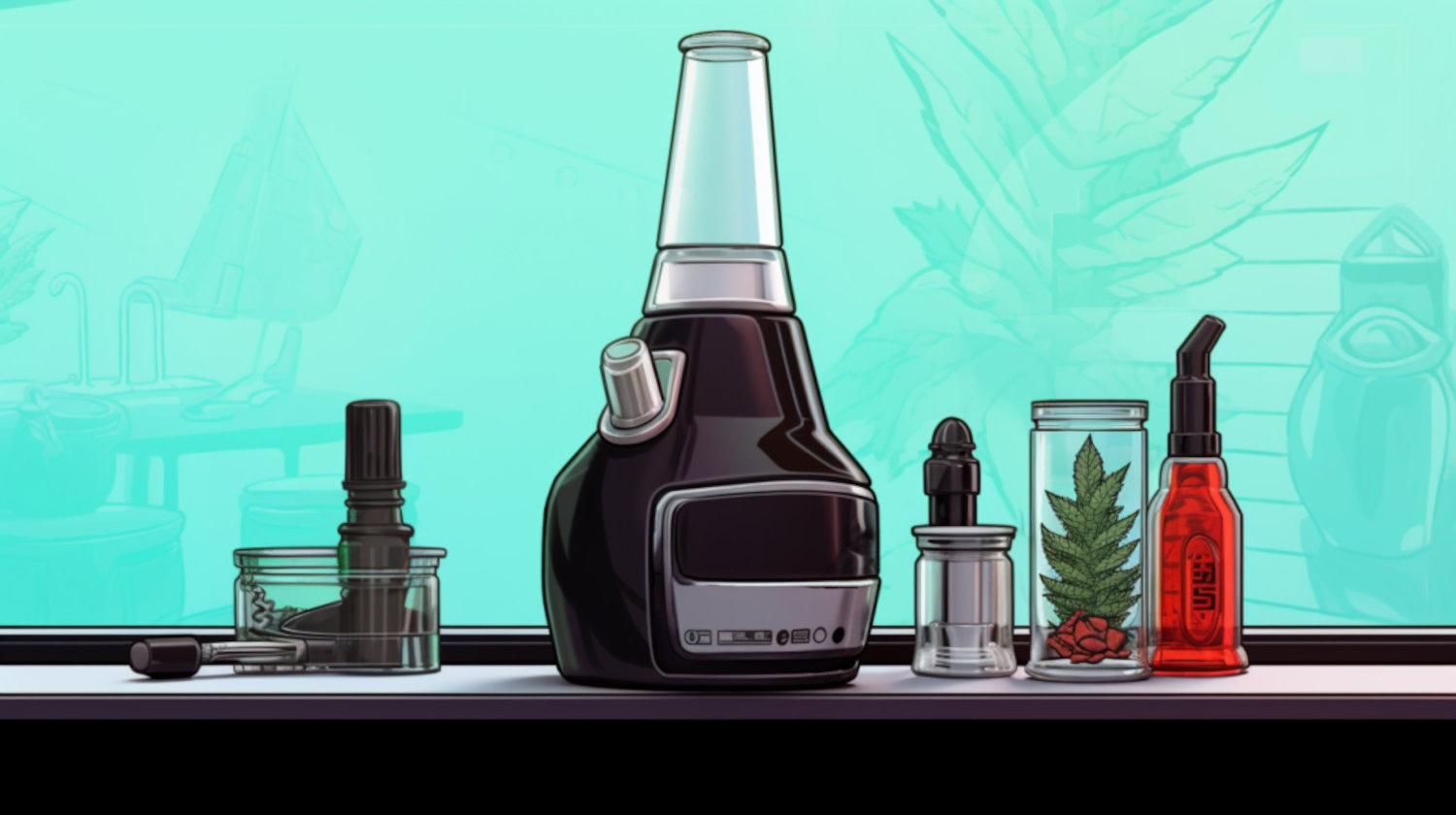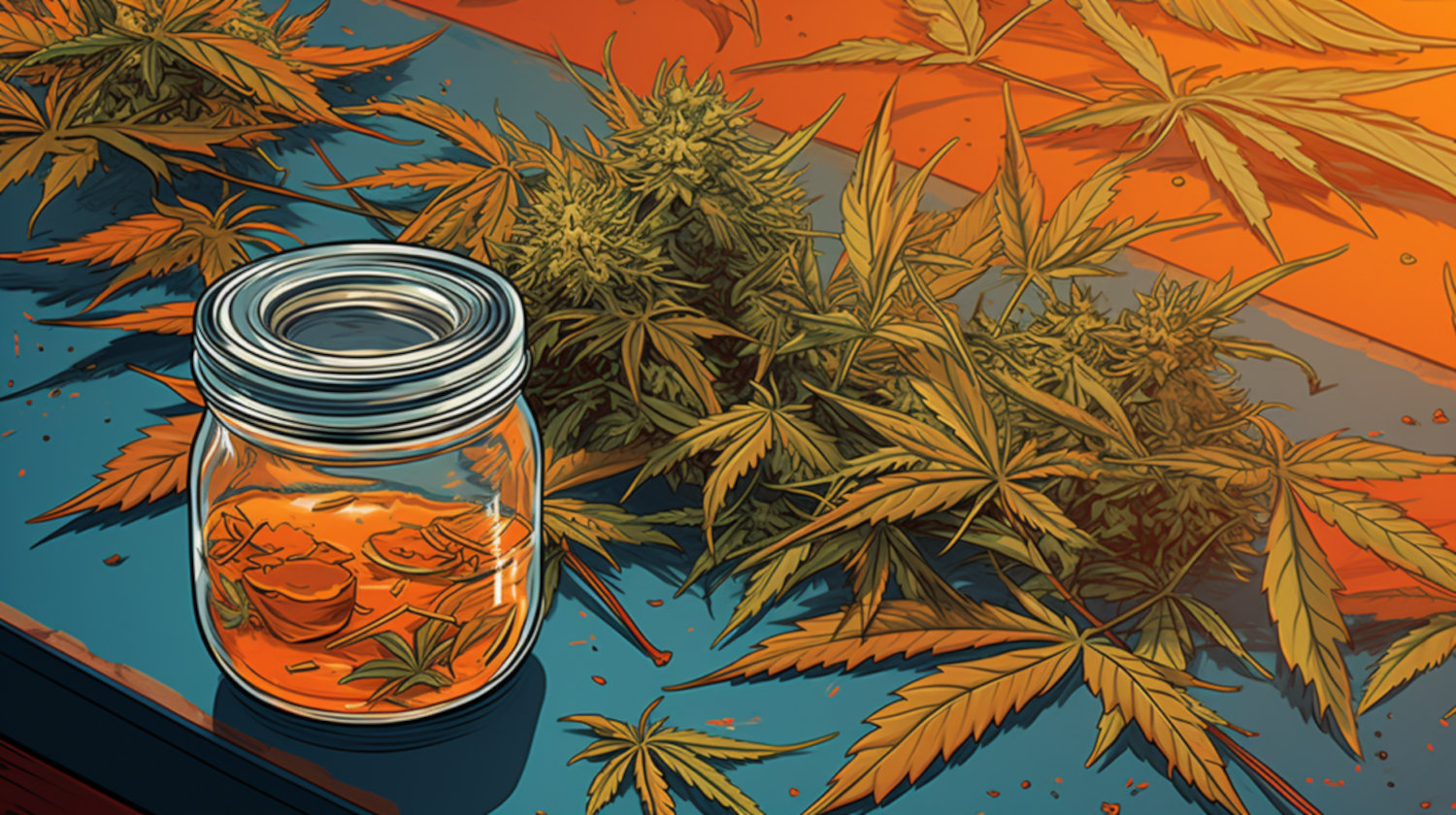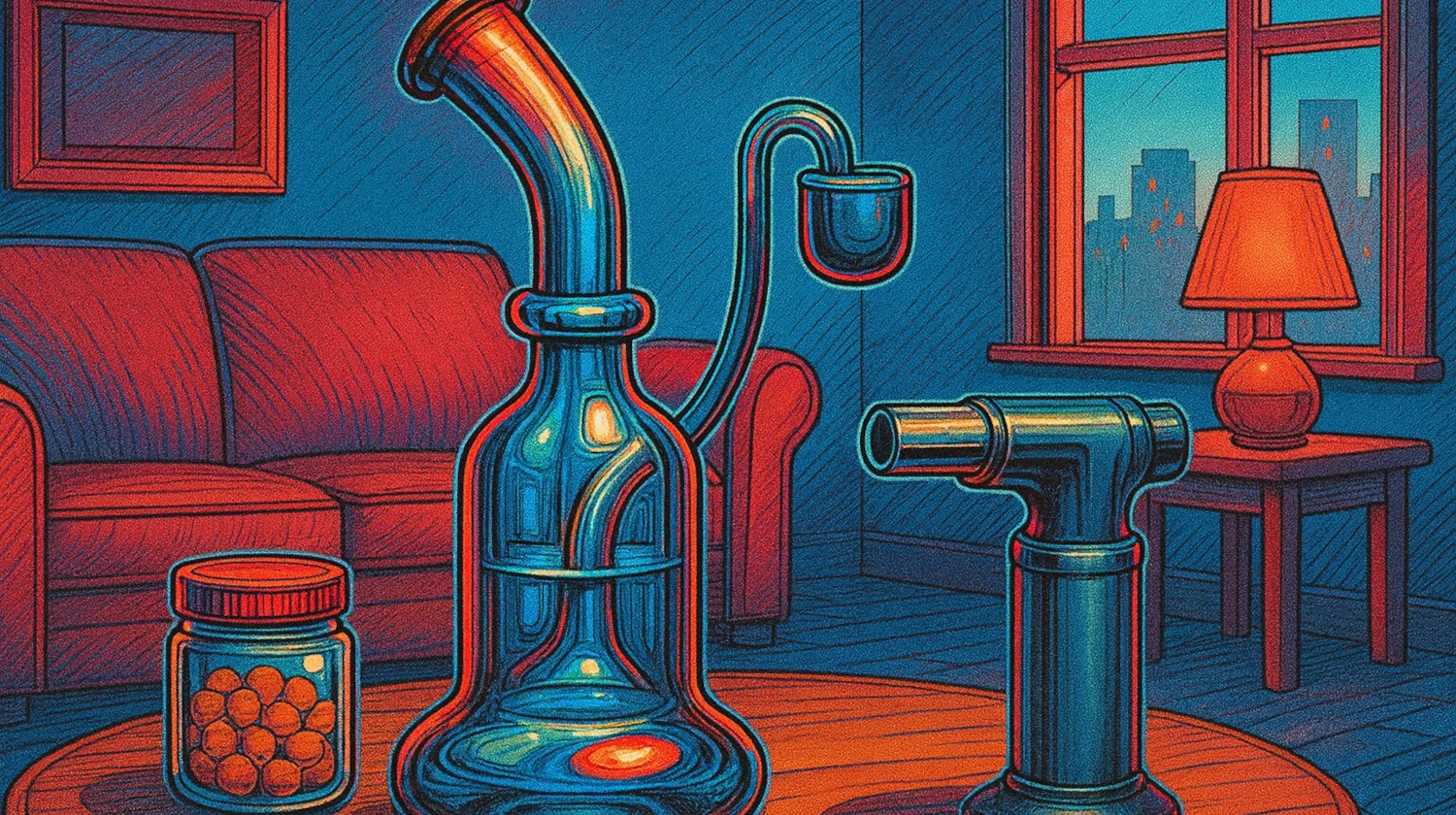The world of cannabis is one of frequent innovation and experiences for recreational and medicinal consumers alike. Among the growing number of options, cannabis extracts have become a favorite way to consume cannabis. The growing fan base is attributed to the potent and highly customizable experiences offered by most extracts, ranging from concentrated oils to various consistencies, including THC sand.
THC sand is an intriguing option for a consumer looking to elevate their cannabis experience due to its unique texture and outstanding versatility. From smoking and vaping to infusing edibles, THC sand stands out as an innovative and effective option for many.
What is THC Sand?
THC sand is a refined, highly potent cannabis product. Living up to its name, THC sand feels like the coarse sand found at many beaches across the world. Its texture makes THC sand ideal for a variety of consumption methods, including vaping or adding to smoked flower. Sand can also be used as an ingredient when making infused edibles.
Other extracts, like kief and dry sift, share this texture. However, kief is the collection of unrefined trichomes that have fallen from the cannabis flower, often found in the lowest chamber of a grinder. Dry sift is created by refining and compressing mass kief collections and is critical in many THC sand products.
Sand may also get lumped in with extracts like sugar and sauce. Each product type has a unique production process and texture. Sugars resemble wet, sticky sand, while sauce is often thick, goopy, and sometimes chunky.
The accurate term for THC sand is THCA sand. THCA is the non-intoxicating precursor compound of delta-9 THC, commonly known as THC, and is the most prevalent compound in the cannabis plant. THC is responsible for the intoxicating "high" often associated with cannabis consumption. THCA converts to THC once heated through a process called decarboxylation. A person will not feel any intoxicating effects if they consume THCA without first decarbing.
Similar to other cannabis extracts, sand is potent, whether in THCA or THC form. Once extracted from the plant, cannabis concentrates have significantly higher cannabinoid levels than raw flowers. While typical cannabis flowers can run between 15% and 30% THC in many instances, concentrates often contain 50-99% of THC. The significant concentration boost results in more potent effects.
Depending on the process utilized, THCA sand may have a concentration between 50% and 99%.
How is THC Sand Made?

Sand can be made with either bubble hash or dry sift hash. The bubble hash method utilizes fresh frozen cannabis flowers as the primary input material. The flash freezing of freshly harvested flowers is called a "live" process and helps retain as much of the plant's trichomes as possible during the drying and curing phase. However, dry sift hash is done with fully cured and dried cannabis flowers.
THCA may come in a powdered isolate form containing a concentration of around 97% to 99% (this is not the same as dissolvable THC powder). It is achieved with an extraction process where solvents extract cannabinoids from the cannabis plant. The extracted compounds then undergo winterization, separating unwanted compounds, waxes, fats, lipids, and other elements until only the desired compound remains. In their extracted form, THCA sand of either type varies from most sugary and saucy extracts and other popular textures like budder, wax, and badder. The isolated compounds then form into crystalline-like pieces that are processed into sand/powder. While solventless diamond extraction is possible, it is much less common to see solventless diamonds on the market.
Unlike isolate, THCA sand made from dry sift or bubble hash is a chemical-free, or solventless, process that produces an extract with highly potent results and more than one plant compound to consume. Producers will take fresh cannabis flowers and agitate the plant over several fine mesh screens, similar to a grinder, but with multiple finer screens utilized. Trichome heads fall through the screens while plant material is separated from the final product.
Bubble hash has the bonus of using fresh frozen flowers instead of cured flowers, and the process adds ice water for the agitation step. The result is similar to kief extraction but requires a more thorough process. In most cases, dry sift sand contains a potency between 50-80%. Dry sift and bubble hash THC sand contains various other plant compounds, including CBD, terpenes, flavonoids, and other minor cannabinoids.
What are the Effects of THC Sand?
High THCA products are converted into potent THC extracts once heated through processes such as smoking or dabbing. The effects of smoked and vaped cannabis are typically felt within 15 minutes or less, with consumers feeling the results for up to four hours in most cases.1
The effects of THC sand are highly favorable. The consumer can take in large quantities of THC (once an isolate is heated) or various cannabinoids if consuming a bubble hash or dry sift sand. THC sand can also be introduced into edibles, providing an extra potency boost to a process that already increases THC concentration via the digestive system and metabolization as it breaks down into the more potent metabolite, 11-hydroxy-THC.2
The effects of THC sand largely resemble other high-potency THC products, with overwhelmingly positive reviews. However, some consumers have experienced adverse intoxication effects at high doses.3
What are the Advantages of THC Sand?

THCA sand and its precursor crystals mirror the benefits of most other high-potency products while also offering a few unique benefits not shared by flower and many cannabis extracts. They include:
- Highly Potent: The high potency is ideal for recreational and medical consumers seeking higher THC doses to reach their desired effects.
- Versatile: Sand can be added to bowls or dabs, included in edible recipes, mixed with concentrates like live resin to create diamonds, or consumed independently.
- Euphoric Effects: Like other forms of THC, sand is associated with feelings of euphoria, altered perception, and the intensification of ordinary sensory experiences.
- “Purity”: Isolates reduce cannabis down to a singular compound, which is considered “pure” to some consumers. However, dry sift and bubble hash THC sand contain a broad range of cannabinoids and terpenes that may help enhance the effects of the extract.4
- Portable: THCA sand is often kept in a small glass or silicone container that is discreet and easy to carry anywhere.
What are the Risks and Cons of THC Sand?
While largely positive, consuming THCA sand can come with drawbacks and risks consumers should be aware of:
- Varied Potency: THC sand in isolate form is one of the most potent types of consumption around. While dry sift sand is highly potent, it is not on the same level as isolate. This means inaccurate dosing can greatly impact the effects a user experiences.
- Adverse Effects: Consuming especially high doses of THC or CBD, particularly in dab form, can lead to or trigger adverse side effects such as psychosis, neurotoxicity, or cardiotoxicity.5
- Smoking Side Effects: Smoking cannabinoids, like THC, have been linked to breathing airway irritation and inflammation. CBD and pure THC have been shown to produce less severe results.
- Possible Solvent Effects: Physiological and psychological disorders linked to extracts like butane hash oil (BHO) include tachycardia, hypertension, anterograde amnesia, temporary loss of consciousness, lethargy, visual/auditory hallucinations, and tactile and visceral hallucinations.6
How to Smoke Live Sand Concentrate

Of all the options, most consumers use their sand for smoking or dabbing. THCA sand typically comes packaged in a small glass or silicone container. Consumers can scoop out as much as they’d like and add it to any bowl, joint, or smoked option. Sand can also be added to a concentrate for an extra potent dab hit. Dabbers can opt for a sand-infused diamond if they’d prefer.
Other Methods of Using THC Sand
In addition to smoking and dabbing, sand can easily be added to any edible, especially beverages. To infuse an edible with sand, scoop out the ideal dosage and add it to the drink or food recipe.
To feel the euphoria THC is known to produce, be sure to decarb your sand before infusing it. Heating your sand converts its contents from the non-intoxicating THCA into THC. Failing to heat your sand will result in some additional plant effects being introduced, but not the “high” many consumers are aiming for.
Safety Tips When Using THC Sand

With plenty of options, consumers are urged to make their own THC sand or only buy from licensed, reputable companies that follow state regulations and lab standards. Buying from these sources will help minimize the risk of consuming ill-produced or mislabeled products like those that can be found on the black market.
Like most cannabis concentrates, THC sand is highly potent. While ideal for experienced consumers, newcomers and anyone with low tolerances might become overwhelmed by the effects. The "start low, go slow" method helps reduce these worries.
Starting with a low dose between 2.5mg and 5mg is often recommended. After consuming this dose, wait 30 to 60 minutes before assessing and deciding if another small dose is needed.7
References
- MacCallum CA, Russo EB. Practical considerations in medical cannabis administration and dosing. European Journal of Internal Medicine. 2018;49:12-19. doi:10.1016/j.ejim.2018.01.004 ↩︎
- Barrus DG, Capogrossi KL, Cates SC, et al. Tasty THC: Promises and Challenges of Cannabis Edibles. Methods Rep RTI Press. 2016;2016:10.3768/rtipress.2016.op.0035.1611. doi:10.3768/rtipress.2016.op.0035.1611 ↩︎
- Turner AR, Spurling BC, Agrawal S. Marijuana Toxicity. In: StatPearls [Internet]. StatPearls Publishing; 2023. https://www.ncbi.nlm.nih.gov/books/NBK430823/ ↩︎
- McPartland JM, Russo EB. Cannabis and Cannabis Extracts. Journal of Cannabis Therapeutics. 2001;1(3-4):103-132. doi:https://doi.org/10.1300/j175v01n03_08 ↩︎
- Alzghari SK, Fung V, Rickner SS, Chacko L, Fleming SW. To Dab or Not to Dab: Rising Concerns Regarding the Toxicity of Cannabis Concentrates. Cureus. 2017;9(9):e1676. Published 2017 Sep 11. doi:10.7759/cureus.1676 ↩︎
- Mullins MF. Cannabis dabbing: An emerging trend. Nursing. 2021;51(5):46-50. doi:10.1097/01.NURSE.0000743108.72528.d8 ↩︎
- MacCallum CA, Russo EB. Practical considerations in medical cannabis administration and dosing. European Journal of Internal Medicine. 2018;49(49):12-19. doi:https://doi.org/10.1016/j.ejim.2018.01.004 ↩︎
The information in this article and any included images or charts are for educational purposes only. This information is neither a substitute for, nor does it replace, professional legal advice or medical advice, diagnosis, or treatment. If you have any concerns or questions about laws, regulations, or your health, you should always consult with an attorney, physician or other licensed professional.




